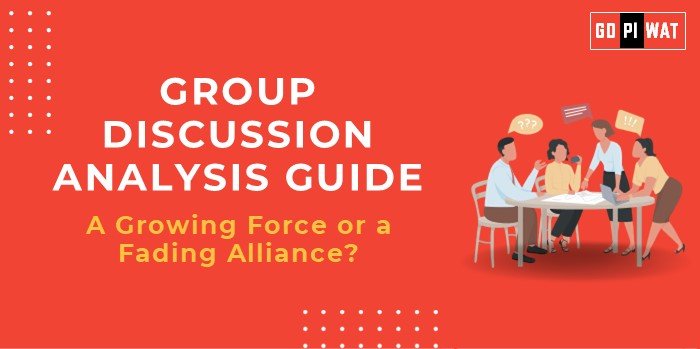📋 Group Discussion Analysis Guide: BRICS – A Growing Force or a Fading Alliance?
🌐 Introduction to BRICS
BRICS—comprising Brazil, Russia, India, China, and South Africa—represents some of the world’s largest emerging economies, with significant collective influence in global politics and economics. Established to foster cooperation on development and economic policies, BRICS has gained attention as an alternative bloc to traditional Western alliances. However, recent economic, political, and geopolitical shifts have raised questions about the sustainability of BRICS as a united force.
📊 Quick Facts and Key Statistics
- 🌍 Population: BRICS nations collectively represent over 40% of the world’s population, amplifying their global influence.
- 💰 GDP Contribution: Account for about 25% of global GDP, underscoring the economic potential of BRICS if coordinated effectively.
- 📦 Trade Volume: Trade among BRICS nations reached approximately $500 billion in 2023, highlighting ongoing economic ties.
- 🏦 New BRICS Development Bank (NDB): With an authorized capital of $100 billion, the NDB aims to fund development projects across member states.
- 📈 Recent Expansions: In 2023, BRICS invited six more nations, including Saudi Arabia and Argentina, indicating potential for growth.
👥 Stakeholders and Their Roles
- 🌍 BRICS Governments: Lead on economic cooperation, policy alignment, and facilitating trade and investment within the bloc.
- 🏦 New Development Bank (NDB): Provides infrastructure and sustainable development financing, aimed at reducing dependency on Western financial institutions.
- 💼 Private Sector: Critical for advancing trade, technology sharing, and investment flows between member countries.
- 🌐 Global Institutions (e.g., IMF, World Bank): Interact with BRICS as alternative funding sources, assessing impacts on global economic dynamics.
🏆 Achievements and ⚠️ Challenges
Achievements
- 🚀 Economic Growth: The economies of China and India have been major growth engines, contributing significantly to global GDP.
- ✅ New Development Bank Success: The NDB has approved over $30 billion in loans for development projects since 2015.
- 🌍 Increased Political Influence: BRICS nations have used their platform to call for reforms in international institutions like the IMF and World Bank, advocating for fairer representation.
- 🔬 Technological Collaborations: Agreements on technology and research have fostered cooperation, particularly between China, India, and Russia.
Challenges
- ⚔️ Diverging Political Agendas: Geopolitical tensions, especially between China and India, have limited cohesive action.
- 📉 Economic Disparities: Varying levels of economic stability and growth rates within BRICS hinder policy alignment.
- ⚖️ Global Perception: Some see BRICS as a counterbalance to Western alliances, creating ideological friction.
🌍 Global Comparisons
The EU’s more integrated policies contrast with the looser alignment of BRICS, highlighting the bloc’s challenges in functioning as a single economic entity.
💬 Structured Arguments for Discussion
Supporting Stance: “BRICS represents a strong collective force with the potential to reshape global governance, particularly as it extends membership to include diverse economies.”
Opposing Stance: “Geopolitical tensions within BRICS, notably between China and India, and economic disparities among members, suggest it may be more a symbolic alliance than a functional bloc.”
Balanced Perspective: “BRICS shows promise as an alternative power bloc, yet internal conflicts and differing national interests could limit its long-term impact.”
📣 Effective Discussion Approaches
- 📊 Opening Approaches:
- Statistical Impact: “With 40% of the world’s population, BRICS has the potential to reshape global trade.”
- Historical Comparison: “In the way the EU shaped Europe’s political landscape, BRICS aspires to be a voice for emerging markets.”
- 🛠️ Counter-Argument Handling:
- Example-Based Rebuttal: Highlight NDB’s success to counter claims of inefficiency.
- Solution-Oriented Response: Propose methods for BRICS members to resolve geopolitical tensions, such as structured conflict resolution frameworks.
🔍 Strategic Analysis of Strengths and Weaknesses
- 💪 Strengths: Large population base, significant natural resources, diverse economies, potential for shared technological advancements.
- ⚠️ Weaknesses: Political tensions, lack of unified foreign policy, uneven economic development.
- 🌱 Opportunities: Growing global need for an alternative to Western-led financial systems, expanding influence through new members.
- ⚡ Threats: Internal conflicts, dependency on Western trade, potential global economic instability.
🎓 Connecting with B-School Applications
- 📈 Real-World Applications: Projects in global trade, development finance, or multinational business strategies can reference BRICS dynamics.
- ❓ Sample Interview Questions:
- “How can BRICS overcome internal conflicts to become a stronger global alliance?”
- “What role can the NDB play in making BRICS a sustainable force in development finance?”
- 💡 Insights for B-School Students: Understanding BRICS’ impact on global economics offers insights for careers in international business and finance.


